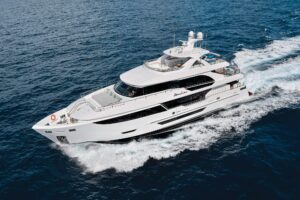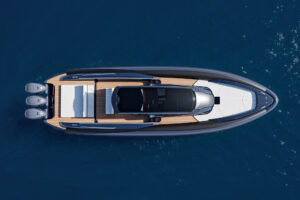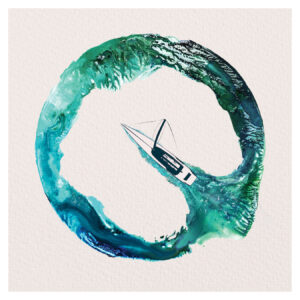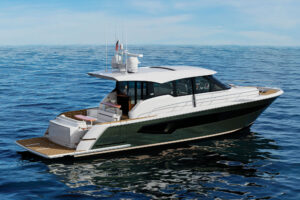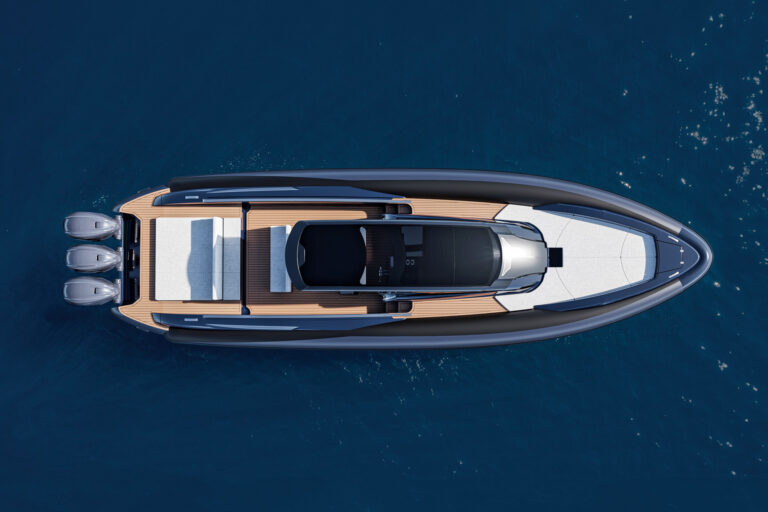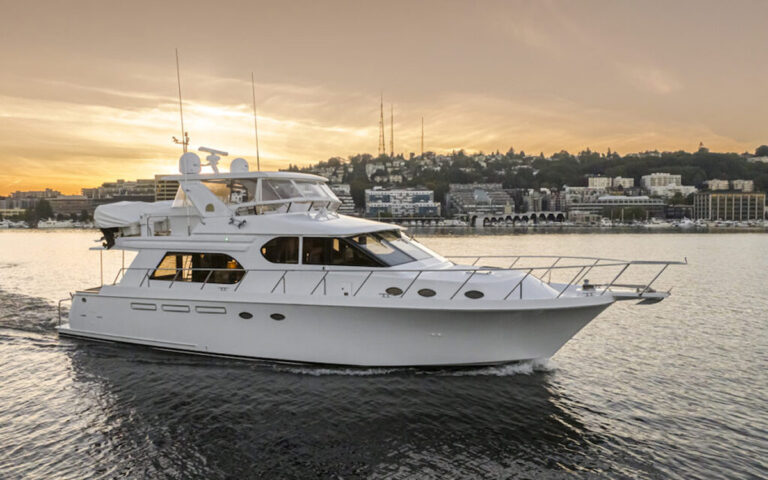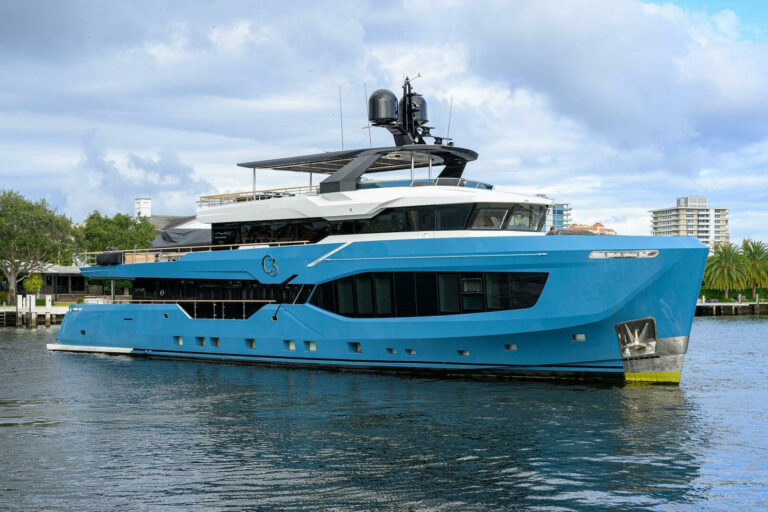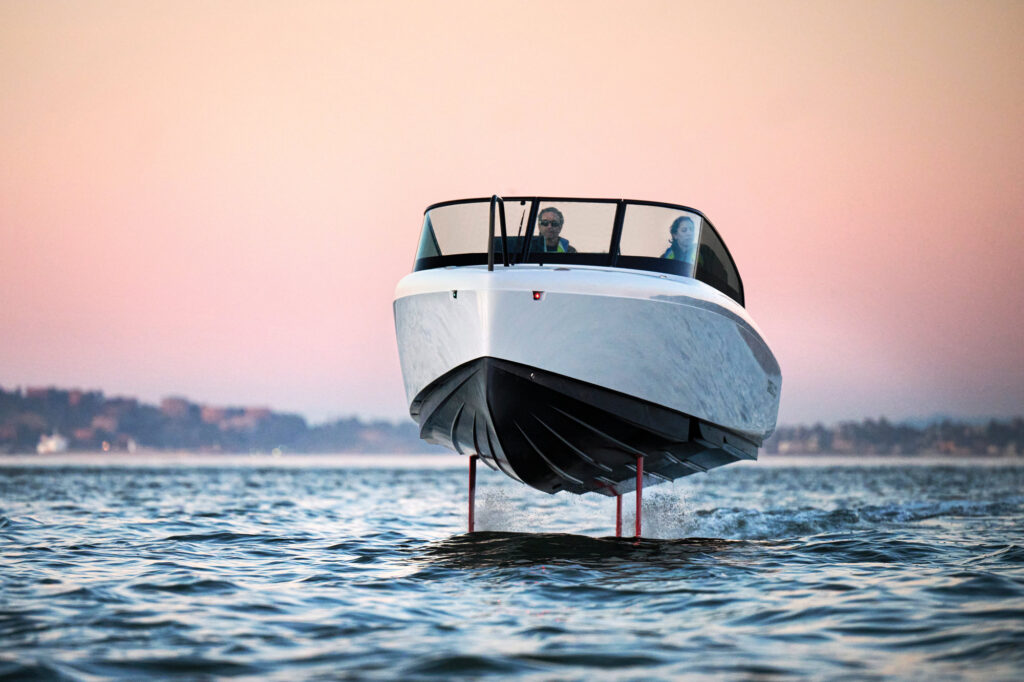
The C-8 is candela’s second-generation, all-electric foiling boat. Stepping aboard, I felt more like I was aboard something from the aerospace industry than the marine sector. Weight, after all, matters greatly when takeoffs are involved. The C-8’s hydrofoils and computer system lift it clear off the brine once the foils are exposed to 16 knots of flowing water.
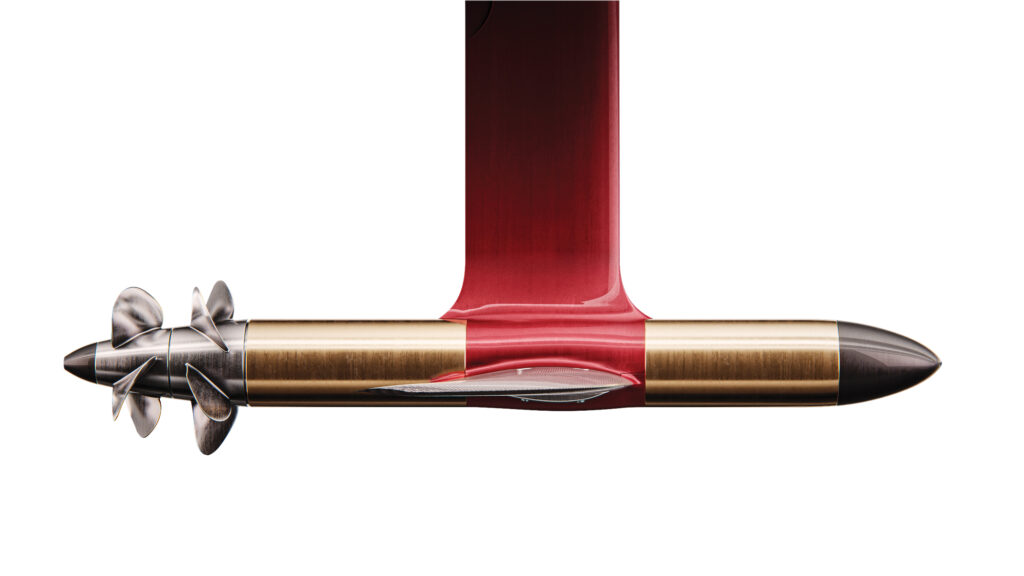
This vessel is built from carbon fiber, which keeps its dry weight at 3,527 pounds. Different center-console and day-cruiser configurations are available. I ran an open-top day-cruiser model, which has three helm seats, aft seating, a basic cabin and a head. Power came from Candela’s C-Pod drive system. This quiet, efficient 50-kilowatt electric motor is fitted inside a narrow torpedo-shaped pod that’s attached to the rudder’s outboard end. The system’s contra-rotating propellers are spun by dedicated inline motors. Fixed hydrofoils extend horizontally from the C-Pod’s fuselage, and a dedicated actuator controls rudder (and, therefore, hydrofoil) pitch.
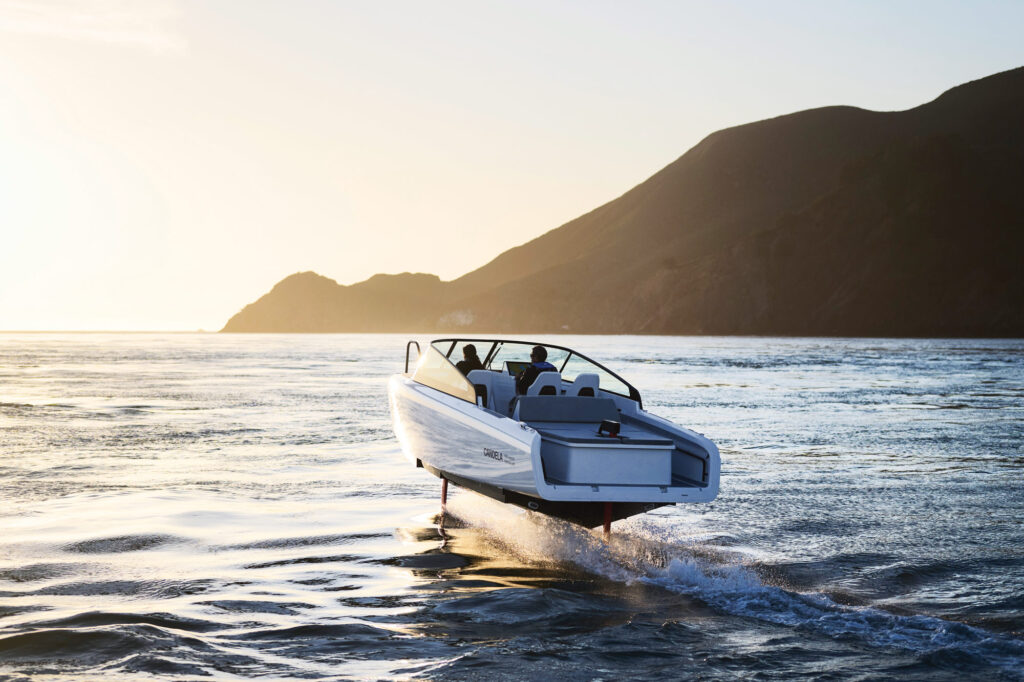
In addition to the rudder foils, the amidships C-Foil system is part of the lift package. C-Foils are composed of two vertical struts and an 8.5-foot horizontal hydrofoil wing. The struts are attached to actuators on their inboard ends, and to the hydrofoil on their outboard ends. These actuators can simultaneously trim the foil’s angle of attack and twist 100 times per second.
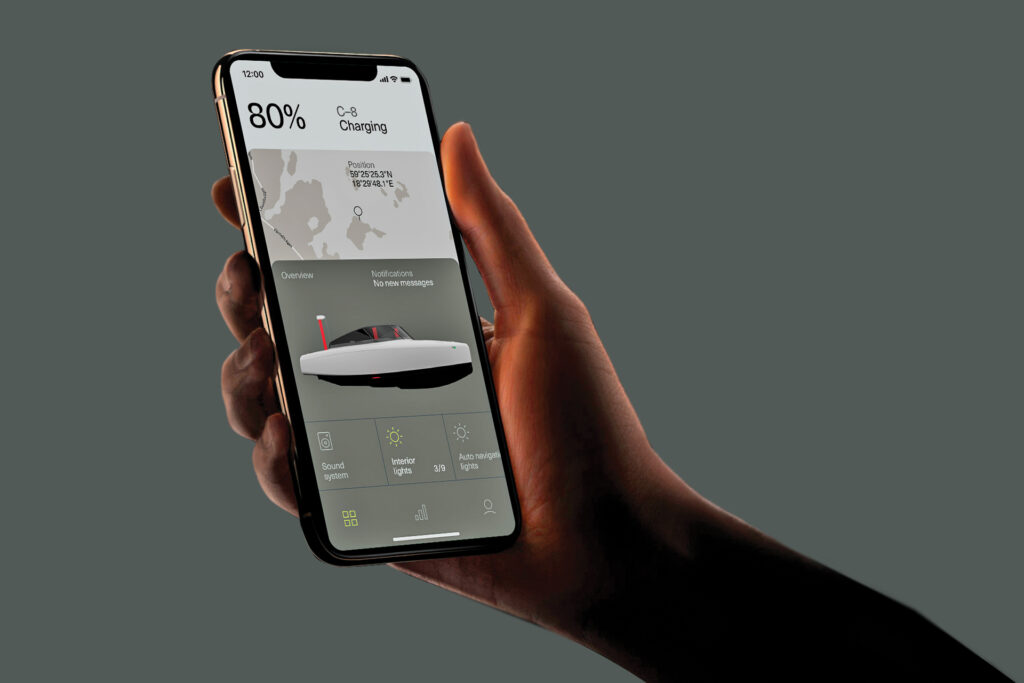
Lifted vessels are inherently unstable, as their centers of gravity are above their lifting points. To counter this, C-8s are equipped with networked sensors that constantly measure ride height. Accelerometers, a GPS and a gyroscope measure the vessel’s movements across three axes. This data is fed to the flight-control computer, which generates foil-actuator commands.
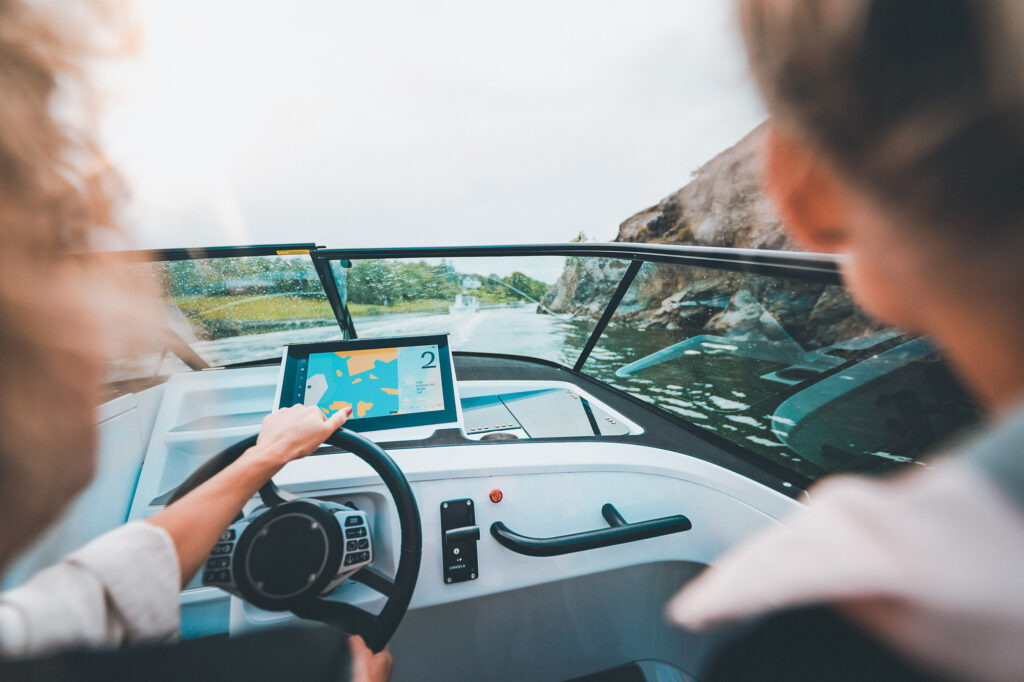
This flight-control system also protects the vessel from poor user decisions, as I discovered while at the helm off Vancouver, British Columbia. When I attempted a rate of turn greater than 12 degrees, the system (wisely) moderated the boat’s speed to eliminate the chance of ventilating the foil and stalling. And it delivered a smooth, stable ride. There was nothing scary about the experience. Driving felt intuitive. When it was time, the flight-control system ensured a smooth transition back to displacement mode.
Most impressive was the C-8’s efficiency. According to Candela, at 20 knots, the vessel consumes 0.8 kilowatt-hours of electricity, which, the builder says, is the equivalent of just 0.026 gallons of gasoline.
Take the next step: candela.com

